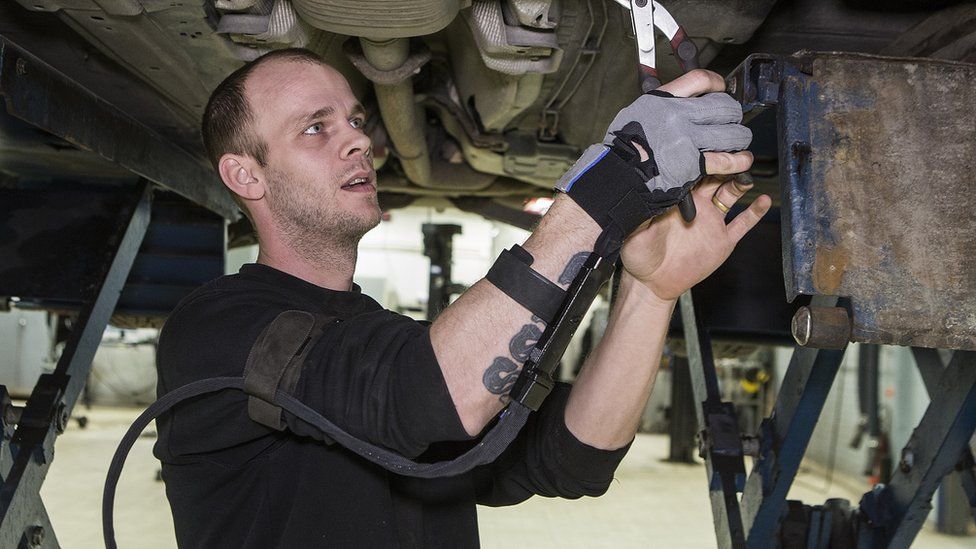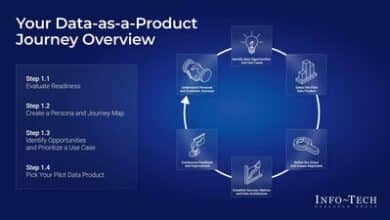Think about it…you, wearing the ironman like body armour, enhancing your physical abilities and becoming tireless. That might just be our near future.
Real name and features
Such technology is scientifically called an exoskeleton. In simple terms, an exoskeleton is an external device that supports, covers, and protects its user, giving greater levels of strength and endurance. It is increasingly being tried out and worn by many around the world and one particular manufacturer, California’s SuitX, expects it to go mainstream.
Going mainstream in terms of buying the suit
SuitX’s founder Homayoon Kazerooni says, “There is no doubt in my mind that these devices will eventually be sold at hardware stores”. “As the prices come down you’ll be able to simply buy them at Home Depot.” Another term used for these suits is “wearable robots”. They can be battery-powered and computer-operated, incorporating motors and hydraulics. Or they can be more simple, passive designs that use springs and dampeners.
Technology previously exclusive to the army is now for civilians as well
Adrian Spragg, an expert on the technology at management consultancy Accenture says, “Integrating humans and machines into one system opens up a new realm of opportunity.” “Many of the early applications have been focused on military and medical applications, but in the last several years there’s been an explosion of use in a range of cases.”
The rapid advancement in technology has brought about this expansion which has seen exoskeletons increasingly being used by manufacturing workers. Various customer specific versions are also now being developed to help people more easily do everything from DIY, to walking, climbing stairs, and other daily activities.
One report says sales are now due to go sky high as a result. According to a study by ABI Research, global exoskeleton revenues are expected to rise from $392m (£284m) in 2020 to $6.8bn in 2030.
The main purpose and USP for mass production
Prof Kazerooni, who is also the director of the University of California’s Berkeley Robotics and Human Engineering Laboratory, says that the primary benefit of the firm’s exoskeletons is to prevent muscle fatigue.
he says, “We’ve shown that muscle activity in the back, shoulder and knees drops by 50%”. “If muscle activities drop, that means the risk of muscle injury is less.
“This means that factory or plant managers get more productivity, their insurance costs are lower, and there are fewer workdays lost to injury. There’s less cost and more productivity.”

Iron Hand for factories and restaurants?
Meanwhile General Motors is also looking at a battery-powered exoskeleton glove developed by Swedish firm Bioservo.
This glove is called the Iron Hand. It has sensors and motors in each finger, which automatically respond to the level of force that the wearer applies to his or her hand when lifting or gripping something. The glove therefore takes up some of the strain. Thus increasing the wearer’s hand strength by 20% for extended periods according to BioServo.
MyPlanet is a Canadian software firm that has conducted surveys. On the use of exoskeletons, its CEO Jason Cottrell says the world is only just beginning to understand the potential for exoskeleton technology.
Implications of the exoskeleton in the labor market
Jason Cottrell further adds, “The implications are, in a word, enormous”. “Labour-intensive industries like manufacturing and agriculture have always depended on a workforce that must endure a certain level of physical exhaustion and risk.
“Devices that support a person’s frame while doing their job will fundamentally change how the industries run.”
As an example of other possible applications, Mr. Cottrell points to Delta Airlines, which announced last year that it was testing a full-body exoskeleton made by Utah-based Sarcos Robotics. The powered suit, which is being tried out by Delta freight-handling, maintenance, and ground support staff, can lift weights of up to 14st (90kg) for eight hours at a time.
Big Pros, possible cons, and cautions
We can see he possible pros of this technology in many areas, even in a setting like a restraint, where a server’s arm will get massive support by wearing this glove . This is possible as the most advanced exoskeletons use artificial intelligence (AI) computer systems, that can to a certain extent learn and adapt by itself.
Prof Sandra Wachter, a senior research fellow in AI at Oxford University, says that such bodysuits are to be welcomed, but with some caution too. She says, “In general I see this development as very positive for occupational health and safety”. “Machines are supposed to help us with dull, dangerous, and dirty jobs. One of the crucial benefits of robotics is that they protect your shoulders, your back, and head, for instance when you’re picking up or moving things.
“Problems, however, arise if robotics also double as workplace surveillance. Are these suits tracking your movements, how fast you move, and how often you take breaks? Does a system compare this data with those of other workers to score or rank them? What happens if you move slower than others, or take breaks more often?”
Why is it not available widely yet?
At the moment, however, more widespread adoption of exoskeleton technology is still held back by a number of factors, including battery capacity, limited range of motion, and cost.
“The average cost [of a full-body exoskeleton] is around $45,000,” says Accenture’s Mr. Spragg. “However, with economies of scale and technological maturity, prices will come down.”



